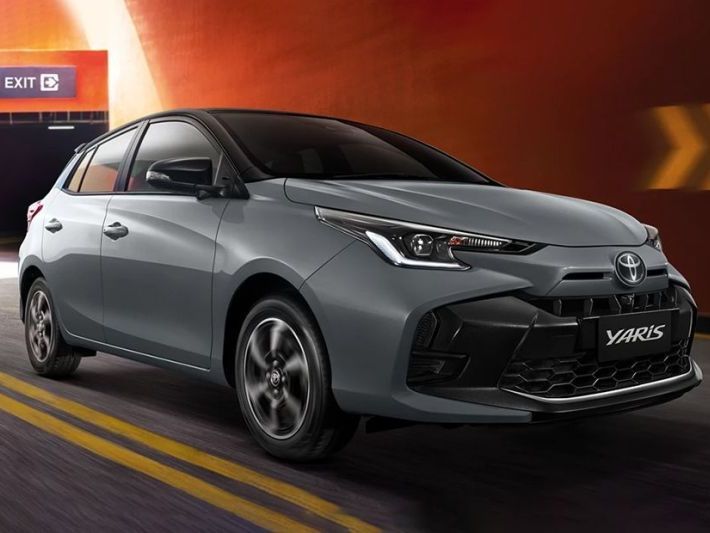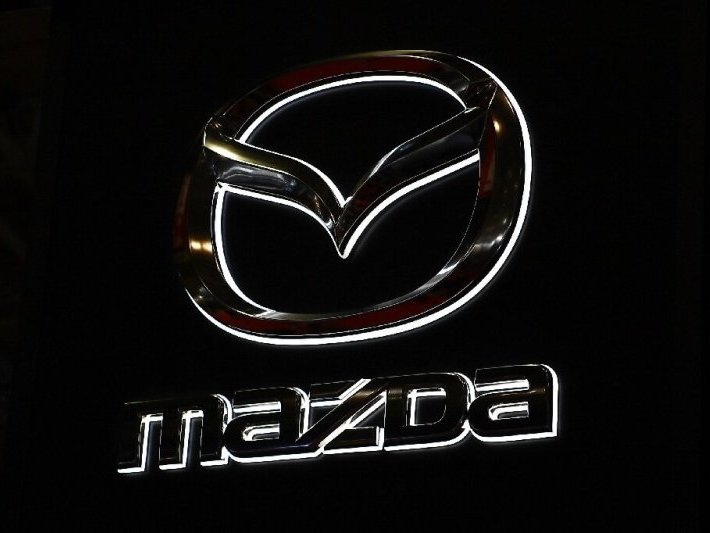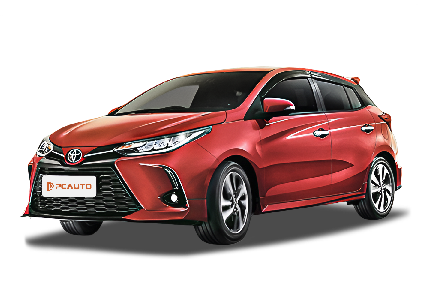Q
how much is a 2012 toyota yaris worth
In Malaysia's used car market, you'll typically find 2012 Toyota Yaris models priced between RM20,000 and RM35,000. Of course, the exact figure hinges on factors like overall condition, mileage, trim level, and service history. A low-mileage, well-maintained high-spec variant might edge closer to that RM35k mark, while higher-mileage examples or base models often sit around the RM20k range.
This little hatch has built a solid rep for being tough as nails and super fuel-efficient – perfect for zipping around the city. Under the hood, the 1.5-liter engine delivers smooth, predictable power, and keeping it running is easy on the wallet. No wonder it's a go-to pick for Malaysians hunting for a reliable, budget-friendly daily driver.
If you're in the market for one, do yourself a favor: dig into the service records, check for any accident history, and try to go through Toyota's certified pre-owned channels if possible – that extra peace of mind is worth it. And hey, splurging on a professional inspection? Totally smart move to avoid hidden headaches down the line.
Oh, and let's not forget – the Yaris holds its value pretty well compared to other small cars in its class. For folks watching their budget but still wanting a dependable ride, this Toyota's definitely a top contender.
Special Disclaimer: This content is published by users and does not represent the views or position of PCauto.
Related Q&A
Q
What is the sport mode on a 2019 Toyota Yaris?
The Sport Mode on the 2019 Toyota Yaris is a drive mode selection feature that primarily enhances power response and handling by adjusting the vehicle's electronic control systems. When activated, the transmission delays upshifts to keep the engine in a higher rev range, delivering quicker acceleration, while the steering might feel slightly heavier to improve road feedback. This mode works best for highway overtaking or mountain road driving, letting the 1.5L naturally aspirated engine stretch its legs a bit more. Keep in mind, though, that Sport Mode does bump up fuel consumption slightly, so it's best used for short bursts when you need that extra zip. Rivals like the Honda Jazz or Mazda 2 offer similar modes too, but each has its own tuning—some focus on linear acceleration, others on sharpening cornering stability. Running Sport Mode all the time could speed up wear on the drivetrain, so make sure to check your transmission fluid and engine condition regularly. Also, pairing it with the manual shift function can take the driving experience up another notch.
Q
How to check transmission fluid 2019 Toyota Yaris?
To check the transmission fluid in a 2019 Toyota Yaris, first make sure the vehicle is parked on level ground and start the engine to let the transmission reach operating temperature (usually after driving for 10-15 minutes). Shift through all gears briefly, then return to Park and engage the parking brake. Open the hood and locate the transmission dipstick (typically with a red or yellow handle, near the firewall). Pull out the dipstick, wipe it clean, reinsert it fully, then pull it out again to check the fluid level—it should be within the "HOT" marks. Also inspect the fluid color (normally clear red; if it's black or has a burnt smell, it needs to be changed promptly). Note that some newer Yaris models may have a sealed transmission without a dipstick; these require a professional technician with special tools to check or replace the fluid. Regularly checking the transmission fluid protects the drivetrain effectively. It's recommended to replace it every 40,000-60,000 kilometers or as specified in the maintenance manual. If you frequently drive in stop-and-go traffic, you can shorten this interval slightly. Using non-genuine fluid may cause gear-shifting hesitation or transmission damage, so Toyota's original ATF WS fluid is recommended.
Q
What engine does a 2019 Toyota Yaris have?
The 2019 Toyota Yaris offers a range of engine options across different markets, with specific configurations varying by trim level and regional specs. Common powerplants include a 1.5-liter four-cylinder naturally aspirated engine (badged 1NZ-FE or an updated variant), pushing out around 107 horsepower. This unit pairs with either a 5-speed manual or 4-speed automatic transmission. Higher-spec models might upgrade to a more efficient 1.2-liter turbocharged engine or a hybrid system. Known for reliability and fuel efficiency, this engine uses Dual VVT-i variable valve timing to optimize low-end torque and high-speed power delivery—perfect for city driving. It’s worth noting that the same-generation Yaris also spawned the GR Sport variant, packing a more potent 1.6-liter turbo engine, though these performance models are pretty rare locally. For maintenance, stick to the 10,000 km or 6-month interval for full synthetic oil changes, and regularly clean the throttle body to keep the engine running efficiently. Toyota’s factory 100,000 km warranty is a nice bonus too, helping cut down on long-term repair costs. If you’re eyeing a used Yaris, pay extra attention to the engine mount bushings and timing chain condition—these are common wear items on higher-mileage examples.
Q
Is the 2019 Yaris a Mazda?
The 2019 Yaris isn't a Mazda; it's a classic compact car from Toyota. However, it's worth noting that in some markets like North America, Toyota collaborated with Mazda to launch the Yaris iA (later renamed Mazda2 Sedan), which was based on the Mazda2 platform. But that's different from the Yaris models commonly seen locally. The 2019 Yaris sold locally was still Toyota's independently developed third-generation model (XP150), powered by a 1.5L naturally aspirated engine, focusing on affordability, practicality, and reliability. Its design and technology were all from Toyota, such as standard VSC vehicle stability control and seven airbags for safety. It's important to note that platform sharing or joint production between car brands is common in the industry. For example, Toyota also has technical partnerships with Suzuki and Subaru. Such collaborations help optimize R&D costs and integrate the strengths of each brand, but they don't change the brand ownership of the vehicles. For consumers, when choosing a car, they should focus more on the specific model's configuration, after-sales network, and their own needs rather than just fixating on brand connections.
Q
How many miles per gallon does a 2019 Toyota Yaris get?
Fuel economy for the 2019 Toyota Yaris varies by trim and transmission. According to official figures, the automatic models with the 1.5L four-cylinder engine return around 30 mpg city, 36 mpg highway, and a combined 33 mpg. The manual transmission version is slightly thirstier, checking in at about 32 mpg combined. This car has won over plenty of buyers with its budget-friendly fuel costs and solid reliability, making it a great pick for daily commutes and city driving. Beyond just sipping gas, the Yaris is known for its compact size and nimble handling—perfect for navigating busy urban areas. If you’re really looking to maximize efficiency, keeping your tires properly inflated and avoiding aggressive acceleration or hard braking can help squeeze out a few more miles per gallon. And hey, if fuel economy is your top priority, it might be worth checking out hybrid options too—they typically deliver even better mpg numbers.
Q
What is the fuel efficiency of the 2019 Toyota Yaris?
The 2019 Toyota Yaris delivers impressive fuel economy, with figures varying slightly depending on the trim and transmission. The version equipped with the 1.5-liter four-cylinder engine and CVT transmission averages around 5.6 L/100km in city driving, drops to roughly 4.7 L/100km on the highway, and posts a combined fuel consumption of about 5.1 L/100km. That kind of efficiency makes it a solid pick for both daily commutes and longer road trips without breaking the bank at the pump. It’s worth keeping in mind that fuel efficiency can be influenced by driving habits, road conditions, and vehicle maintenance. Sticking to smooth acceleration, avoiding sudden braking, and keeping up with tire and engine maintenance can all help squeeze even more miles out of each tank. As a compact car, the Yaris has long been popular for its reliable performance and low upkeep costs, and its fuel economy stacks up well against competitors in its class. If you’re really looking to maximize fuel savings and eco-friendliness, the hybrid version is worth checking out—it takes fuel efficiency to an even higher level.
Q
Is a 2019 Toyota Yaris a good car?
The 2019 Toyota Yaris is a solid all-around subcompact that’s perfect for daily commuting. It carries on Toyota’s reputation for reliability and durability, with a smooth 1.5L naturally aspirated engine that delivers great fuel economy—ideal for city driving. While the interior isn’t the roomiest, the layout is smart, and there’s enough storage space for everyday needs. The cabin materials prioritize functionality over flash, and in terms of features, you get basic safety gear like ABS and airbags, with higher trims possibly adding nice-to-haves like a backup camera. Maintenance costs are reasonable, parts are easy to come by, and it holds its value well as a used car. If you’re on a tight budget and value practicality and dependability, the 2019 Yaris is definitely worth a look. The subcompact segment is pretty competitive, though—besides the Yaris, check out rivals like the Honda Jazz or Mazda 2. They each have their own strengths, whether in handling or interior design, so it’s a good idea to test-drive a few and see which fits your needs best before deciding.
Q
Is the 2019 Yaris a reliable car?
The 2019 Yaris holds up pretty well in terms of reliability. It carries on Toyota's usual reputation for durability, with that tried-and-true 1.5L naturally aspirated engine under the hood. Maintenance costs are pretty reasonable, making it a solid pick for daily commuting. The transmission shifts nice and smoothly, and the suspension setup leans towards comfort, which works well for local road conditions. The interior space isn't exactly cavernous, but the storage solutions are practical. Fuel economy is another plus – it's pretty efficient, so you'll save a decent amount on gas over time. When it comes to keeping it reliable, make sure to keep up with regular maintenance records, especially things like transmission fluid and brake upkeep. Those little details really affect how the car holds up long-term. If you're looking at the used market, the 2019 Yaris has decent resale value, but when checking one out, pay extra attention to the electrical system and suspension components. Those can turn into problem areas if they haven't been properly maintained. Compared to its peers, it has a relatively low failure rate, but even so, holding onto complete service records after buying will help keep it running at its best.
Q
How much is a 2019 Yaris?
The 2019 Toyota Yaris typically ranges from around RM50,000 to RM70,000 in the used car market, with prices varying based on condition, mileage, trim level, and location. The higher-spec 1.5L Sport variant or hybrid models might edge closer to RM80,000. Known for its reliability and fuel efficiency, this car’s 1.5L Dual VVT-i engine paired with a CVT transmission works great for city driving. Maintenance costs are reasonably affordable too, making it a top pick for many families. When buying used, it’s smart to check service records and accident history—factory-certified used cars are your best bet for quality. Keep an eye out for warranty offers from Toyota or authorized dealers; these vehicles usually go through strict inspections and come with extra coverage. Plus, the Yaris holds its value well for a subcompact, so you won’t take a huge hit when reselling later. If you’re on a tighter budget, 2018 or 2020 models are worth considering—they’re pretty similar in features but might be more budget-friendly.
Q
How much is a 2019 Yaris worth?
The 2019 Toyota Yaris is currently fetching prices in the used car market ranging from approximately RM55,000 to RM75,000. The exact price depends on factors like condition, mileage, trim level, and service history, with higher-spec 1.5L Sport variants or hybrid models usually commanding a premium. This car is known for its reliability and fuel efficiency, making it perfect for city commuting. Its 1.3L or 1.5L engine delivers smooth power, and maintenance costs are relatively low. With a strong presence in the used car market, parts are readily available, ensuring easy follow-uprepairs. When buying, it's advisable to check for complete service records, pay special attention to the transmission and chassis condition, and consider using a third-party inspection service to verify the car's condition and avoid accident-damaged or flood-affected vehicles. Additionally, keep an eye on the expiry dates of road tax and insurance, as these can impact the final transaction price.
Popular Cars
Model Year
Car Compare
Car Photo
Latest Q&A
Q
Why is 21000 RPM impossible?
A speed of 21000 RPM is almost impossible to achieve on ordinary internal combustion engines, mainly due to factors such as material strength, friction loss, and combustion efficiency. Currently, the red line speed of mass-produced cars is usually between 6000 and 9000 RPM. Even in high-performance engines such as the V8 era of F1 racing cars, the highest speed is only about 18000 RPM. Exceeding this range can cause excessive centrifugal force on components such as pistons and connecting rods, leading to mechanical failure or even disintegration. In addition, the combustion time of the mixture is extremely short at high speeds, making it difficult to optimize ignition timing and intake efficiency, and may even reduce power output. Electric vehicles, on the other hand, have no piston motion restrictions, and the motor speed can reach 20000 RPM Above, but it is necessary to reduce the wheel speed through a reducer. In the future, if material science breakthroughs or special designs such as rotary engines are adopted, theoretically it may approach this speed, but mass production still faces cost and durability challenges.
Q
How much horsepower is 4000 RPM?
The horsepower output at 4,000 RPM depends entirely on the specific model and engine design. There’s a huge variation across different displacements, turbocharged, or naturally aspirated engines. For example, a 1.5L turbo might push 150 hp at 4,000 RPM, while a 2.0L NA engine at the same revs could be down around 120 hp. The only way to get the real number is to check that car’s power and torque curve.
Keep in mind, horsepower isn’t a fixed value—it changes with RPM, forming a curve. Naturally aspirated engines usually hit peak power higher up (around 5,500-6,500 RPM), whereas turbos tend to have a fat torque curve lower down (say, 2,000-4,500 RPM). That’s why turbo cars feel punchier in everyday driving.
For modders, tweaks like ECU remaps or exhaust upgrades can squeeze out more ponies, but stay street-legal. Just remember: more power often means worse fuel economy and extra strain on components. If you’re going down that road, get a pro to tune it right.
Q
Is 60,000 RPM possible?
The question of whether 60000 RPM is possible is currently difficult to achieve in the field of internal combustion engines. The speed of traditional gasoline engines is usually between 6000 and 8000 RPM, while high-performance engines may reach around 10000 RPM. However, 60000 RPM far exceeds the material and mechanical limits of existing piston engines. However, it can be achieved in certain special fields such as turbomachinery or electric motors. For example, the MGU-H turbo motor in the energy recovery system (ERS) of F1 racing cars can exceed 100000 RPM, while dental phones or industrial high-speed electric spindles can easily break through 60000 RPM, These high-speed devices typically use air bearings or magnetic levitation technology to reduce friction. For ordinary consumers, such high speeds are not necessary for daily use, but understanding these technologies can help understand the characteristics of different power systems. For example, although electric vehicles have high speeds, they can meet the needs through a single speed gearbox, which is in sharp contrast to the multi speed design of traditional internal combustion engines.
Q
Is 5000 hp possible in a car?
Indeed, certain modified or extreme experimental vehicles like dragsters with multi-turbo systems or jet-engine conversions can achieve 5,000 horsepower – though these are strictly track-only machines requiring specialized fuel. For production cars, hybrid and electric drivetrain advancements are rapidly pushing boundaries, with some hypercars now exceeding 1,500 hp. Theoretically, optimized combustion-electric synergy could approach that extreme output.
That said, ultra-high-performance engines demand extreme cooling, reinforced drivetrains and chassis rigidity. In real-world driving, excessive horsepower often compromises handling and efficiency. Most modern performance cars wisely stay within 300-800 hp – this sweet spot delivers thrills without sacrificing usability. Meanwhile, EVs prove lower horsepower figures can still deliver brutal acceleration thanks to instant torque.
Q
How many rpm is 1hp?
Regarding the question of '1 horsepower (hp) equals how many revolutions per minute (rpm)', it should be clarified that horsepower and rpm are two different physical quantities and cannot be directly converted. Horsepower is a unit of power that represents the speed at which the engine does work, while RPM is the number of revolutions per minute of the engine crankshaft. The relationship between the two depends on the design and operating conditions of the engine. Generally speaking, the power of an engine varies with the speed, but the specific value needs to be determined by the external characteristic curve of the engine. For example, a naturally aspirated engine may output maximum horsepower at 5000rpm, while a turbocharged engine may reach peak power in a lower speed range. For daily driving, it is more practical to understand the torque and power curves of the engine, as torque determines the acceleration ability of the vehicle, while power affects the maximum speed. Choosing the appropriate shifting timing can better leverage the engine performance. If you want to understand the correspondence between horsepower and RPM of a specific vehicle model, you can refer to the technical parameters or measured data provided by the manufacturer.
View MoreRelated News

Toyota Yaris Interior Design Revealed: The Ideal Choice for Daily Commutes
AshleyJul 17, 2025

Highlights of the Toyota Yaris: The Perfect Fusion of Outstanding Power and Comfortable Handling
MichaelApr 16, 2025

Mazda Plans to Launch CX-20 in Southeast Asia to Compete with Toyota Yaris Cross
RobertMar 20, 2025

Is my Yaris fuel consumption normal? What should the fuel consumption per 100km be?
MichaelFeb 28, 2025

Toyota takes the crown at the second stop of the 2025 WRC, the GR Yaris helps Toyota take the top of the points table
JamesFeb 19, 2025
View More


















Pros
Cons